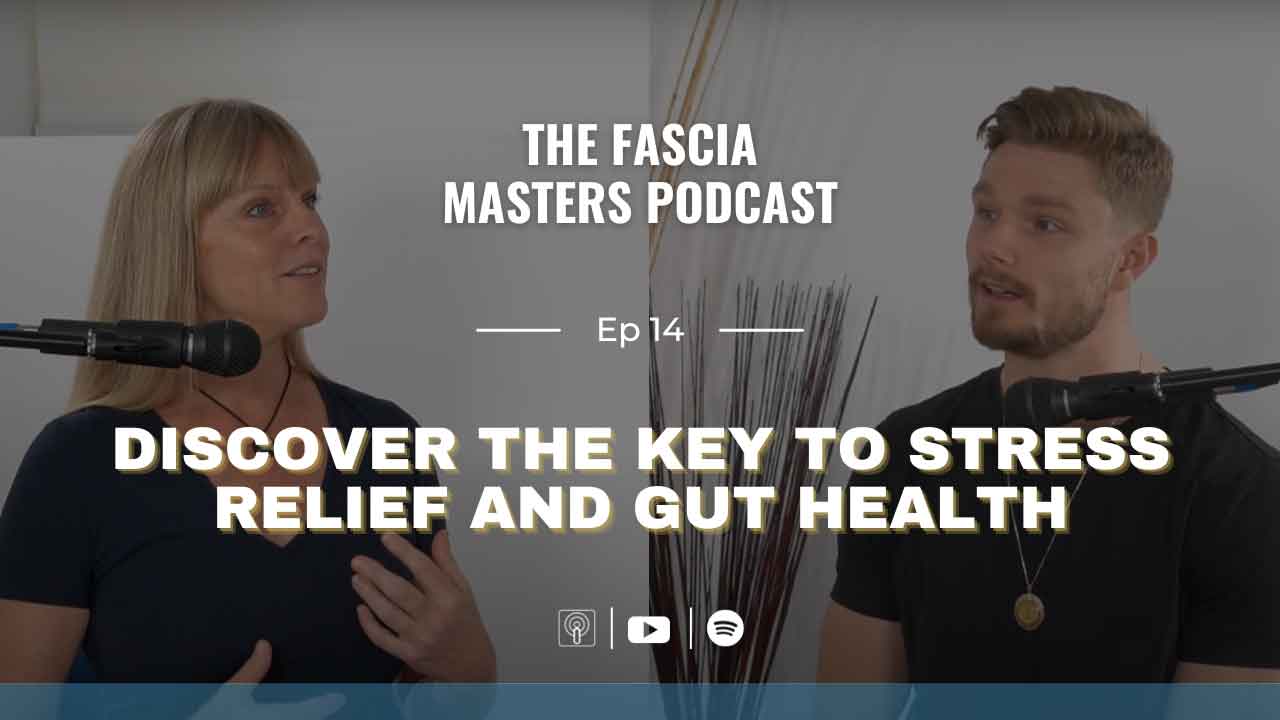Discover the Key to Stress Relief and Gut Health| The Fascia Masters, Season 2 – Episode 14


Recently, discussions surrounding the gut-brain connection have gained immense popularity, with many hailing the gut as the "second brain." This communication highway between the gut and the brain, and its correlation with fascia, has become a hot topic in wellness conversations. Let's unravel the intricate relationship between our gut, our brains, and the often-overlooked element – fascia.
Diving into the anatomy, the enteric nervous system nestled in our guts takes center stage. This intricate network of neurons is linked to the brain through the vagus nerve – the communication highway facilitating the exchange of signals between our gut and brain. The question emerges: How does this connection relate to fascia?
It becomes apparent that the diaphragm, a remarkable muscle, plays a pivotal role. The diaphragm operates both consciously and unconsciously, driving the breath. However, when we fail to consciously engage this muscle, particularly in moments of pain, fear, or stress, the upper chest muscles take the lead in breathing. This shift in breathing patterns aligns with a fear frequency, tethering us to the past or future, disconnected from the present.
For optimal functioning, the diaphragm must be consciously activated. Its engagement not only alters our breathing pattern but sets in motion a series of events that shape the gut-brain connection. Picture the diaphragm moving rhythmically – a massage for the abdominal organs, a catalyst for digestion, absorption, and elimination.
The stomach, liver, and other vital organs respond favorably to diaphragmatic breathing during activities like eating. This intentional breath aligns us with the parasympathetic nervous system, fostering a connection to the present moment. The diaphragm's movement generates a massaging effect, enhancing mobility and creating a positive impact on digestion and nutrient absorption. But what about those whose bodies have undergone compression and collapse over time? Fascia decompression emerges as the key to accessing the diaphragm's full potential. Breaking down adhesions through this process allows the diaphragm to function optimally, unleashing its power to support overall well-being.
Understanding the diaphragm's location – a muscle plate just above the abdominal organs – brings clarity to its role. As we consciously breathe diaphragmatically, we induce a gentle, rhythmic movement, akin to a massage for the abdominal region. This promotes energy flow, creating a conducive environment for optimal cell function.
Anxiety, a huge ailment in today's fast-paced world, finds its roots in the gut-brain connection. Chronic inflammation, a consequence of compromised breathing and other lifestyle factors, creates stagnancy. This stagnant environment becomes a breeding ground for parasites, bacteria, and fungi, releasing toxins that the liver must tirelessly manage.
Conscious diaphragmatic breathing emerges as a natural nootropic, infusing oxygen and expelling carbon dioxide, cleansing the lungs and the liver. This process, often enhanced through practices like Block Therapy, swiftly alleviates brain fog and anxiety. By strengthening the diaphragm, we improve energy flow, supporting the mitochondria in every cell, which, fueled by oxygen, function as the energy centers.
As we navigate the landscape of the gut-brain connection, we uncover the symbiotic dance of breath, fascia, and conscious awareness. Through practices like Block Therapy, we gain the tools to decompress, reset, and empower our bodies, fostering optimal health and a vibrant connection between our second brain – the gut – and our primary brain.
You can find us on Spotify or Apple Podcasts. Don't forget to subscribe on your preferred platform - and leave us a comment, we'd love to hear your feedback! Listen to today's episode below.
Learn more about decompressing your fascia in our FREE Ultimate Fascia Decompression Kit.

Responses